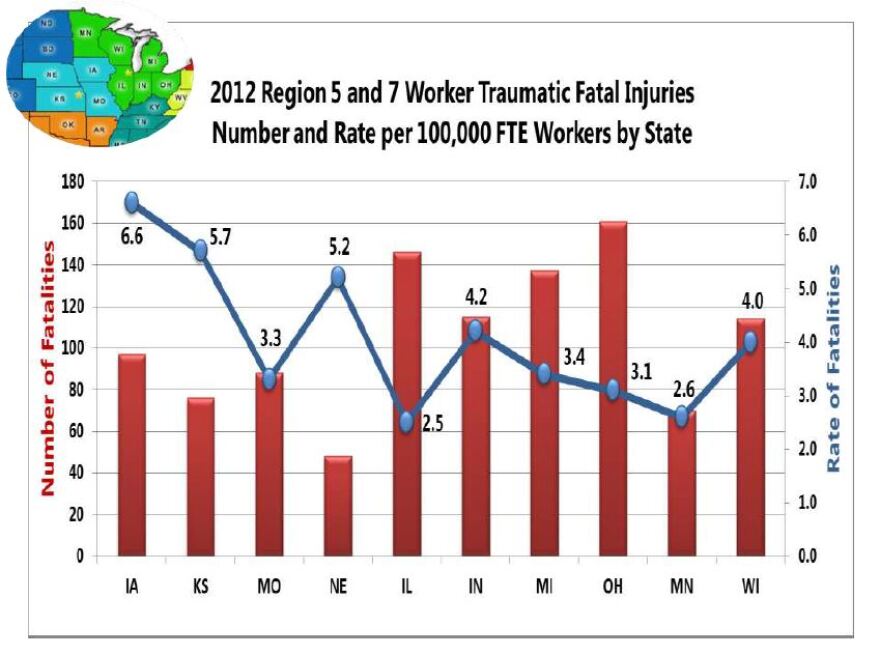Iowa has the highest rate of worker fatalities and injuries in the Midwest.
Kathy Leinenkugel, of the Iowa Department of Public Health, says this is due to several factors, including the fact that Iowa has an aging workforce where many people are self-employed.
"More and more of these crews, whether in construction or agriculture, are small mom and pop jobs," says Leinenkugel. "They don't have the resources to have a safety officer in place, they don't have the equipment, and they don't have anyone to spot them - to work with them and watch out for hazards that the individual worker might not see when handling equipment."

On this edition of River to River, Ben Kieffer talks with Iowans who work the most dangerous jobs, including a construction worker, a nurse, an electrician, and a farmer who lost both his legs in a combine accident, Rick Meister from Lake View, Ia.
"It just happened so quick, and it's a reminder that farming is a danger all the time," says Meister. "It don't matter what you're doing; whatever piece of equipment you pick up, there's a danger."
Also joining the conversation: Brandi Janssen, of the University of Iowa and Iowa’s Center for Agricultural Safety and Health, Randy Rayner, the business manager for the Laborers’ Local Union 43, and Carri Casteel, an associate professor at the University of Iowa's Occupational and Environmental Health department.
Casteel conducts research in workplace violence prevention, and she says violence is the third leading cause of death in the workplace nationwide, especially for health care workers.
"Nursing is a pretty dangerous field in itself," says Shawna Ritchie, a nurse from Winterset. "There's a lot of confused patients, combative patients, patients who are detoxing, who are older with dementia. I've been kicked, scratched, sit on, and it's a regular thing that we go through."
Casteel says there are large-scale efforts to help keep health care workers safer, including a commitment by management to make a cultural shift towards greater safety. This same effort can be witnessed in the agricultural and construction industries as well, and business leaders are hoping it will lead to a decrease in fatality and injury rates.




